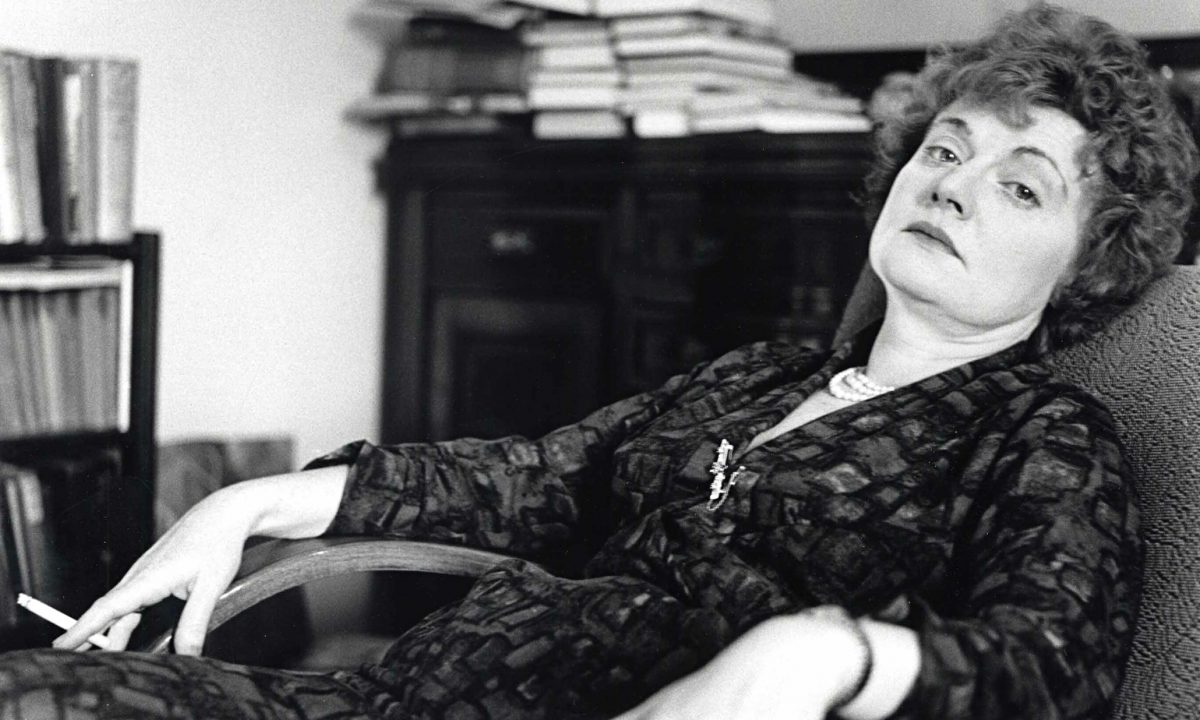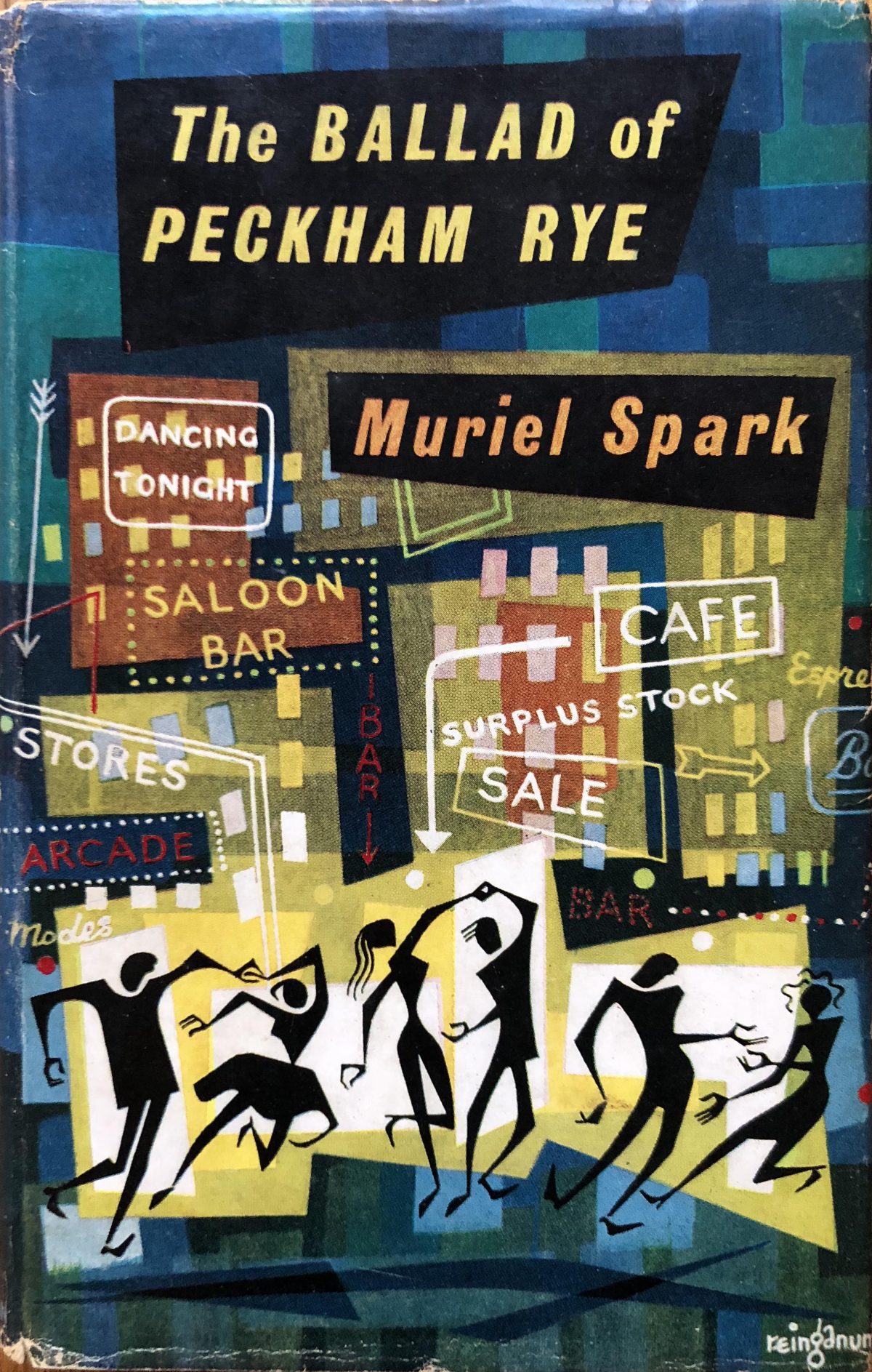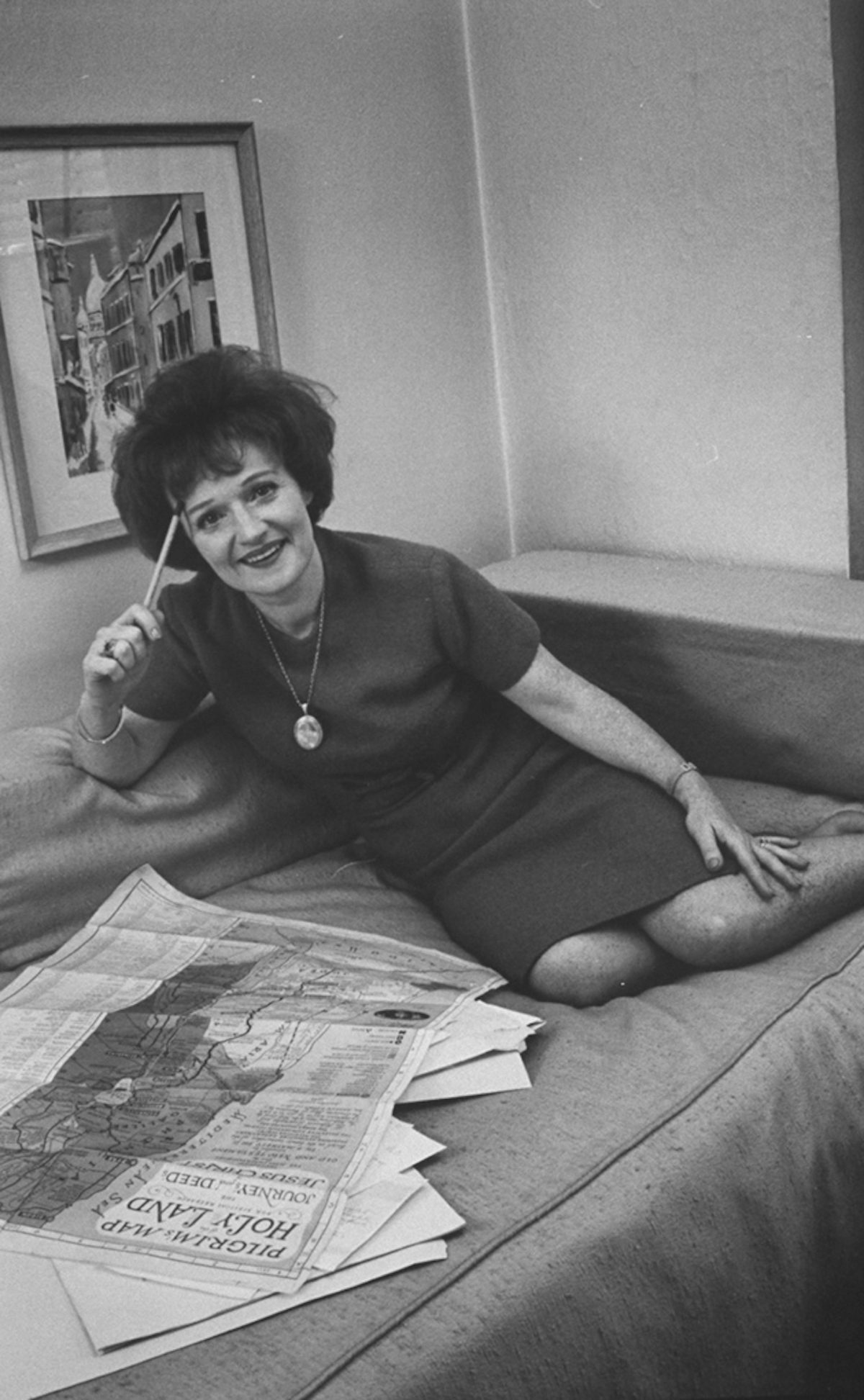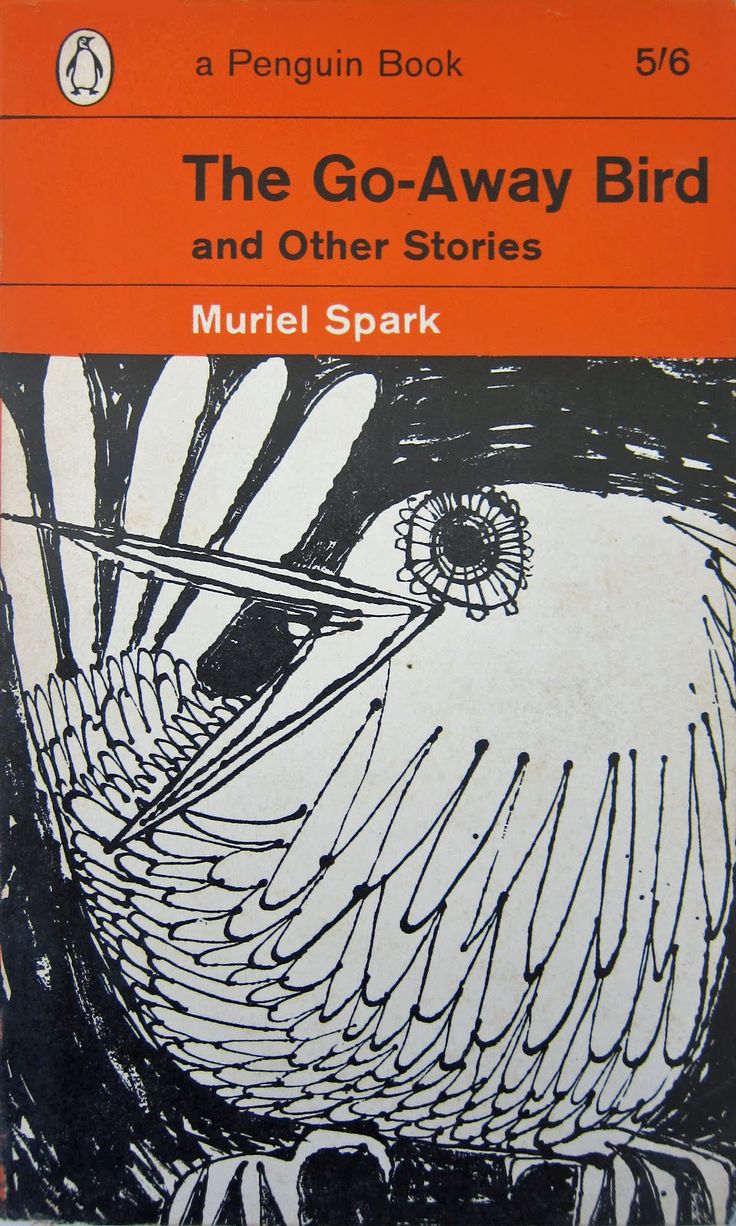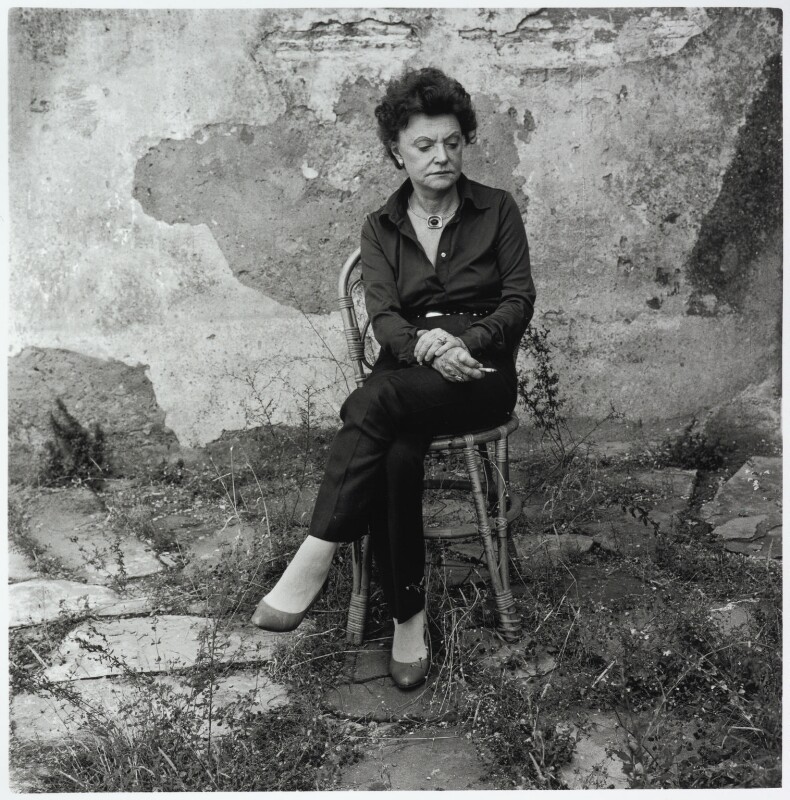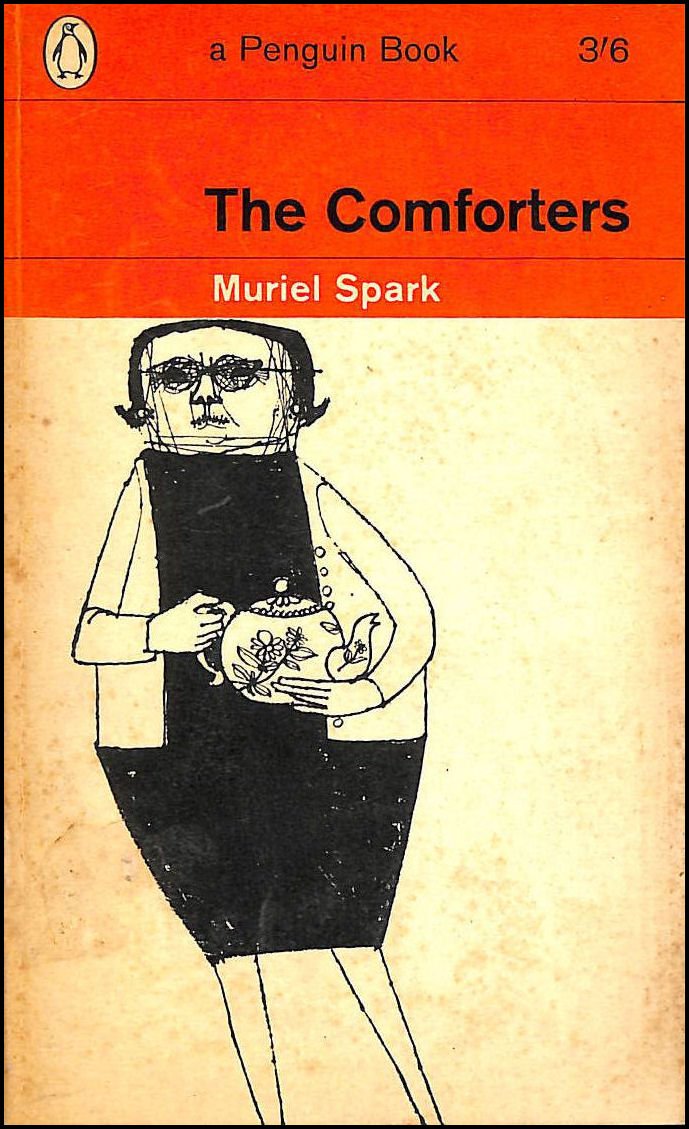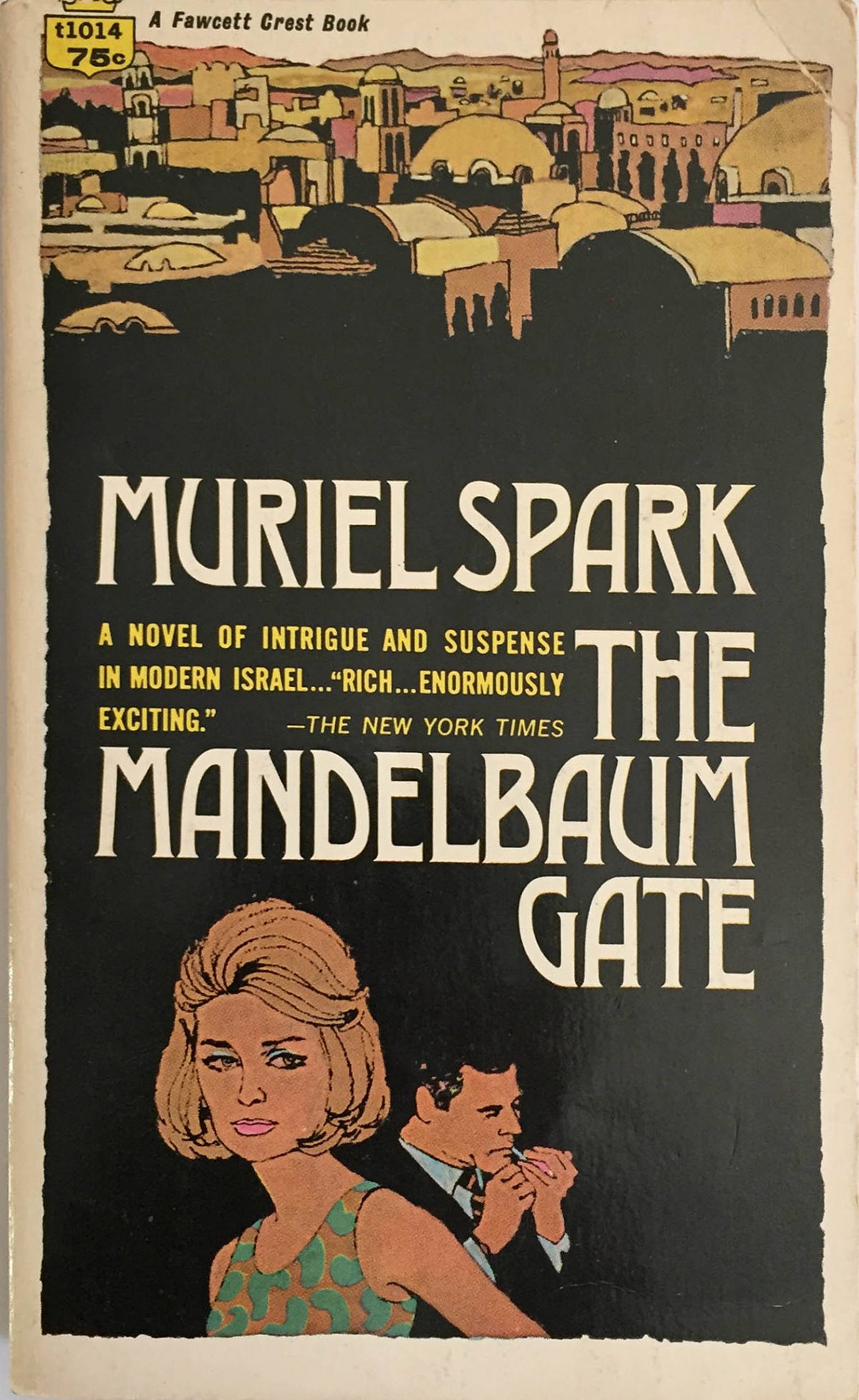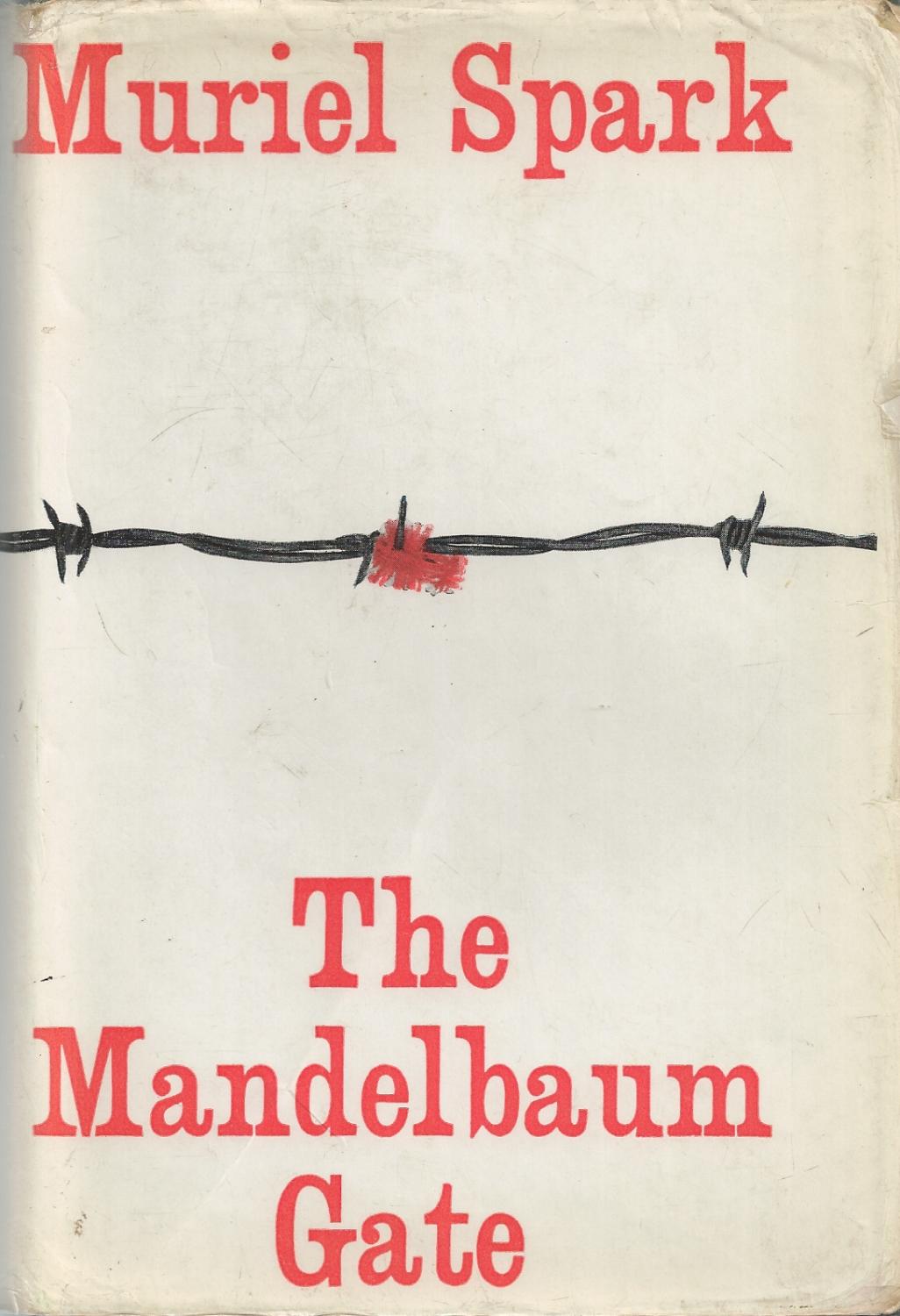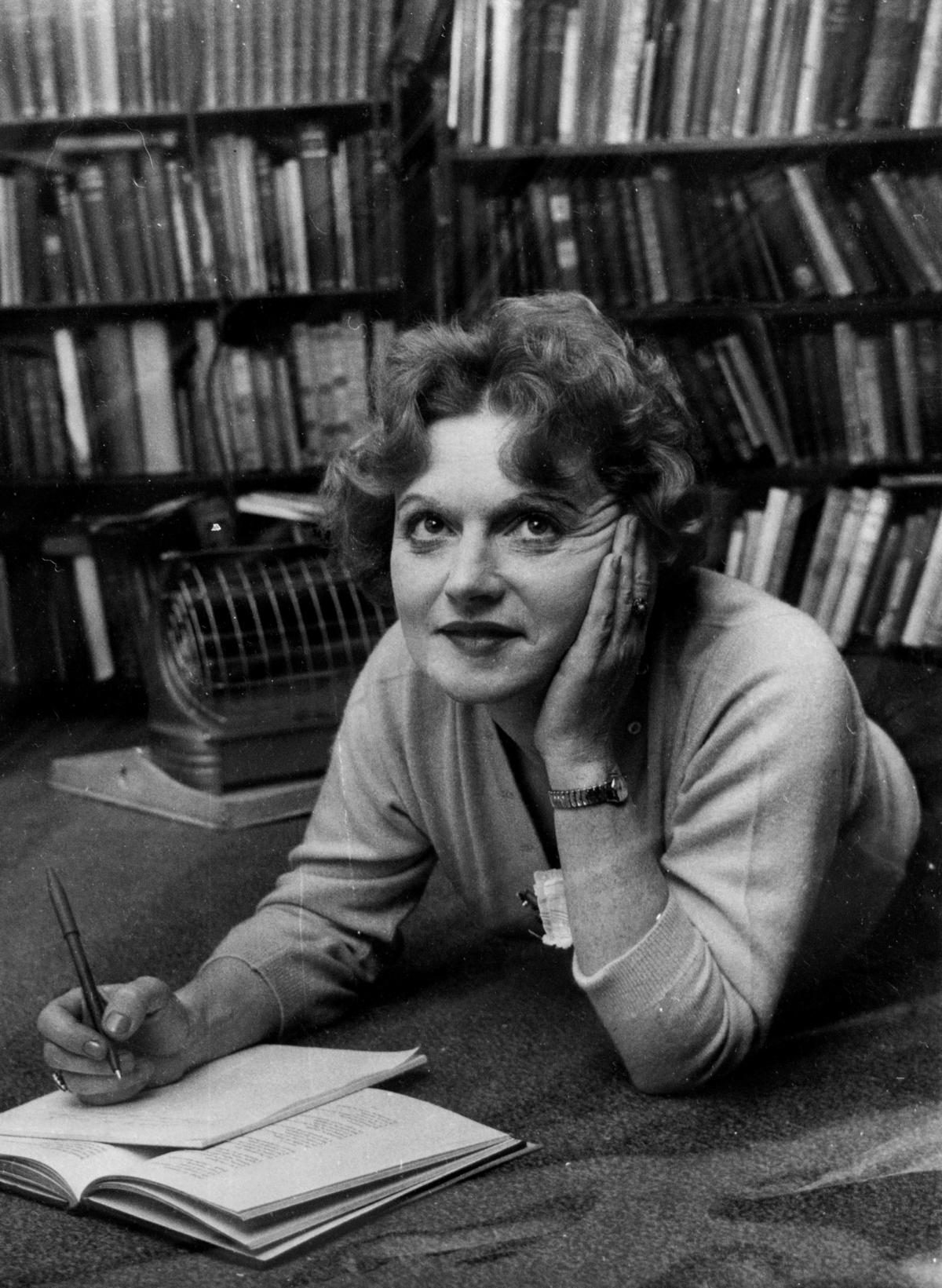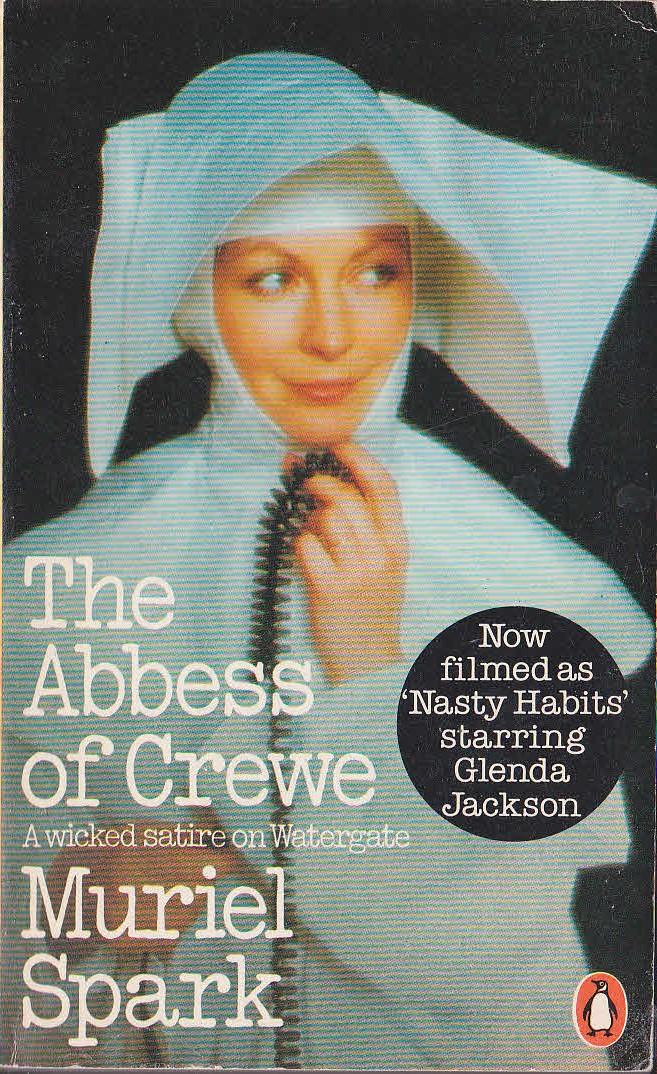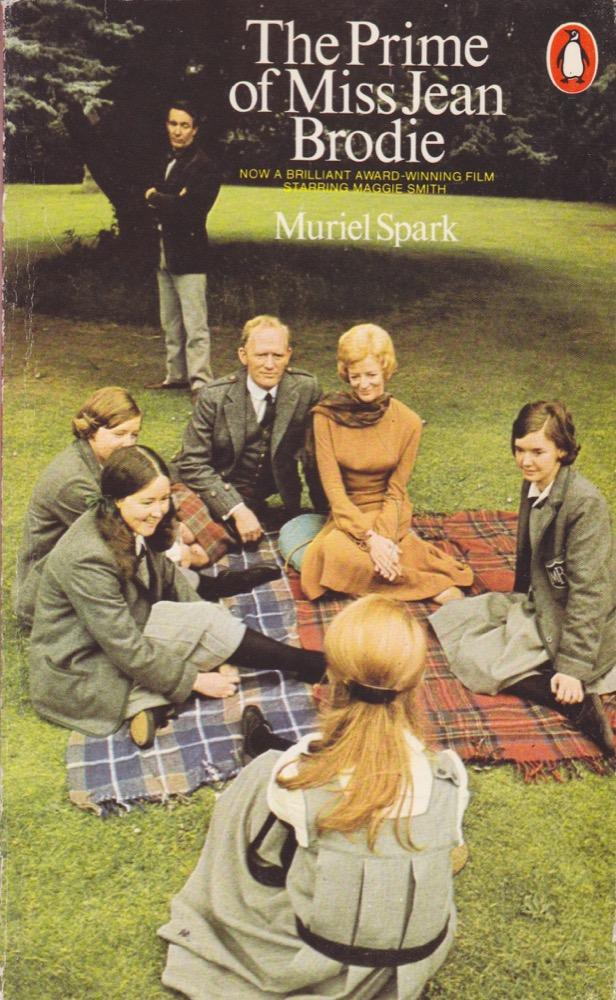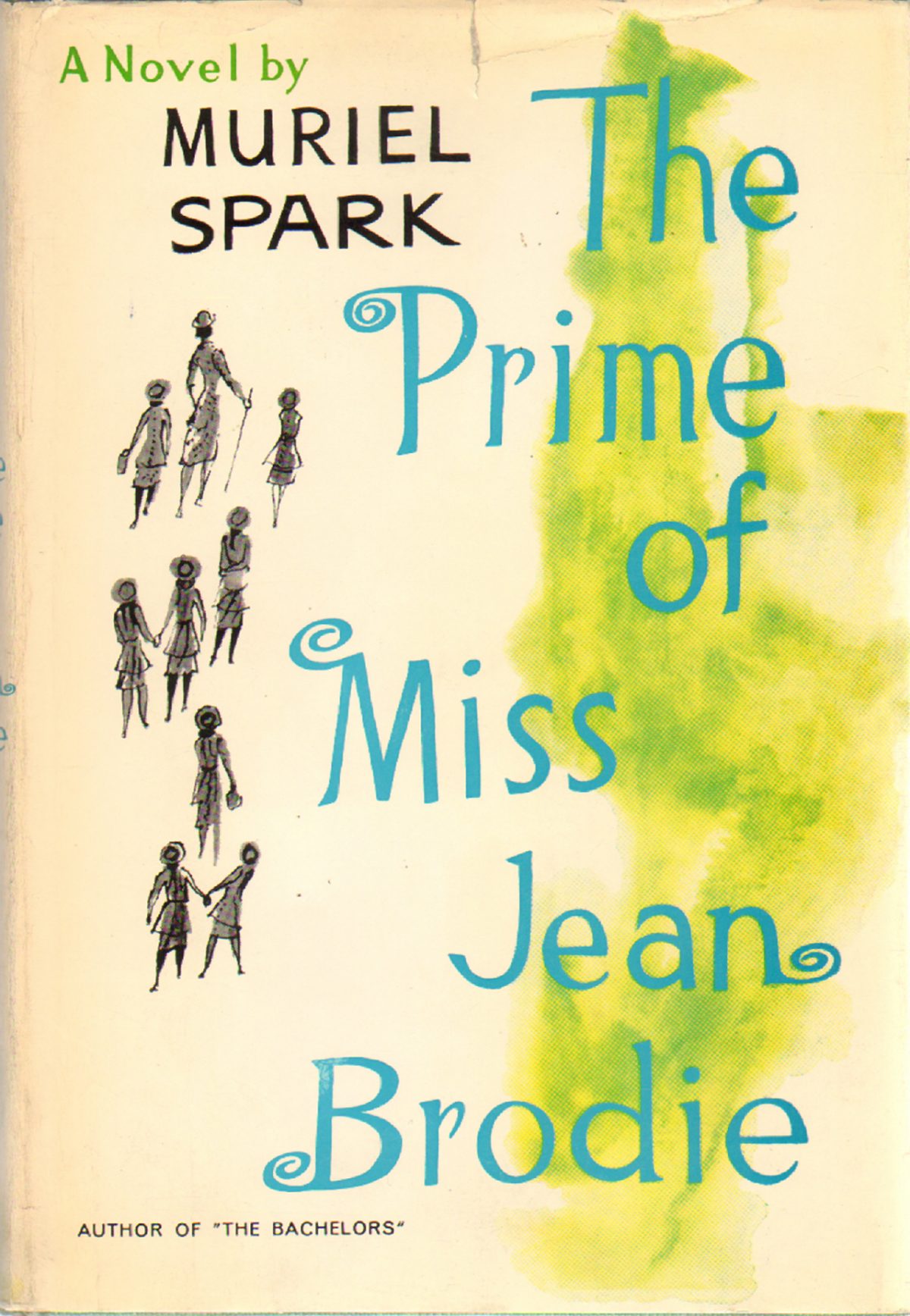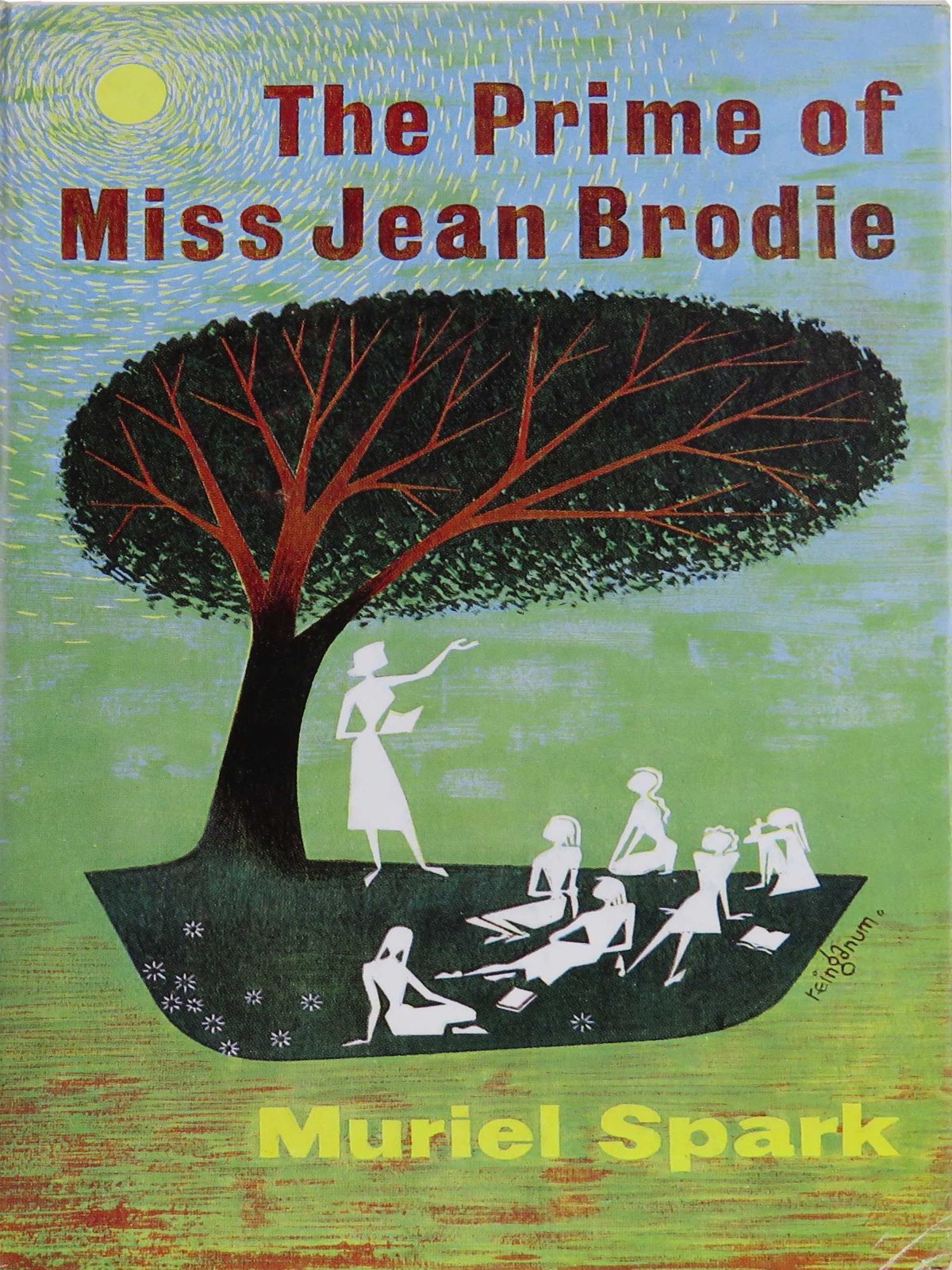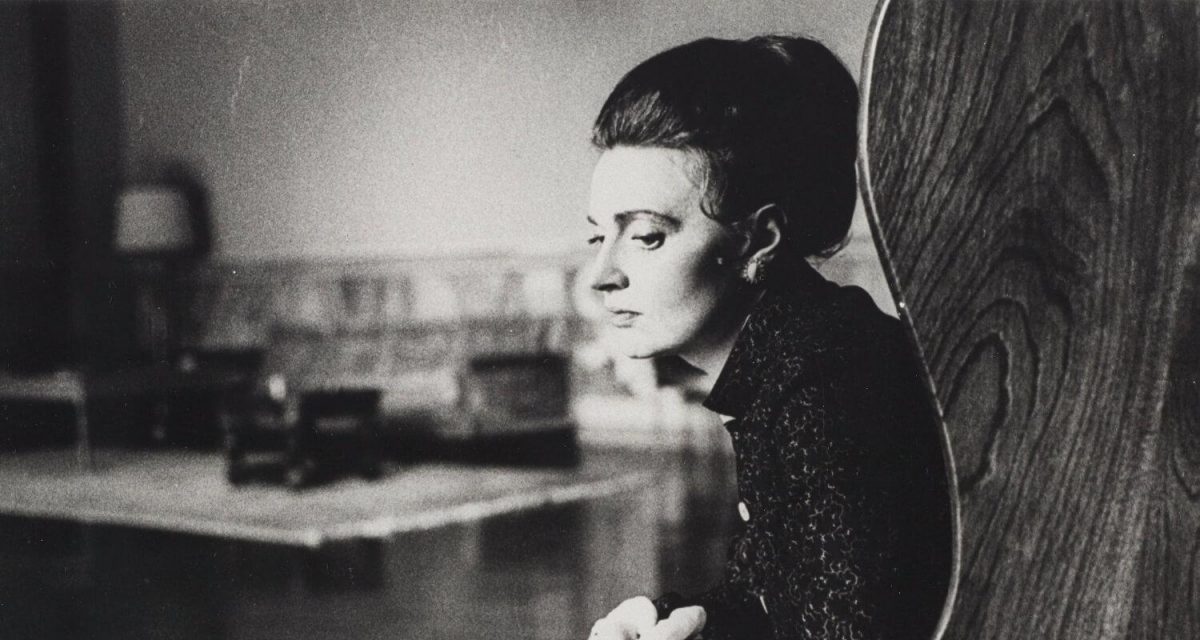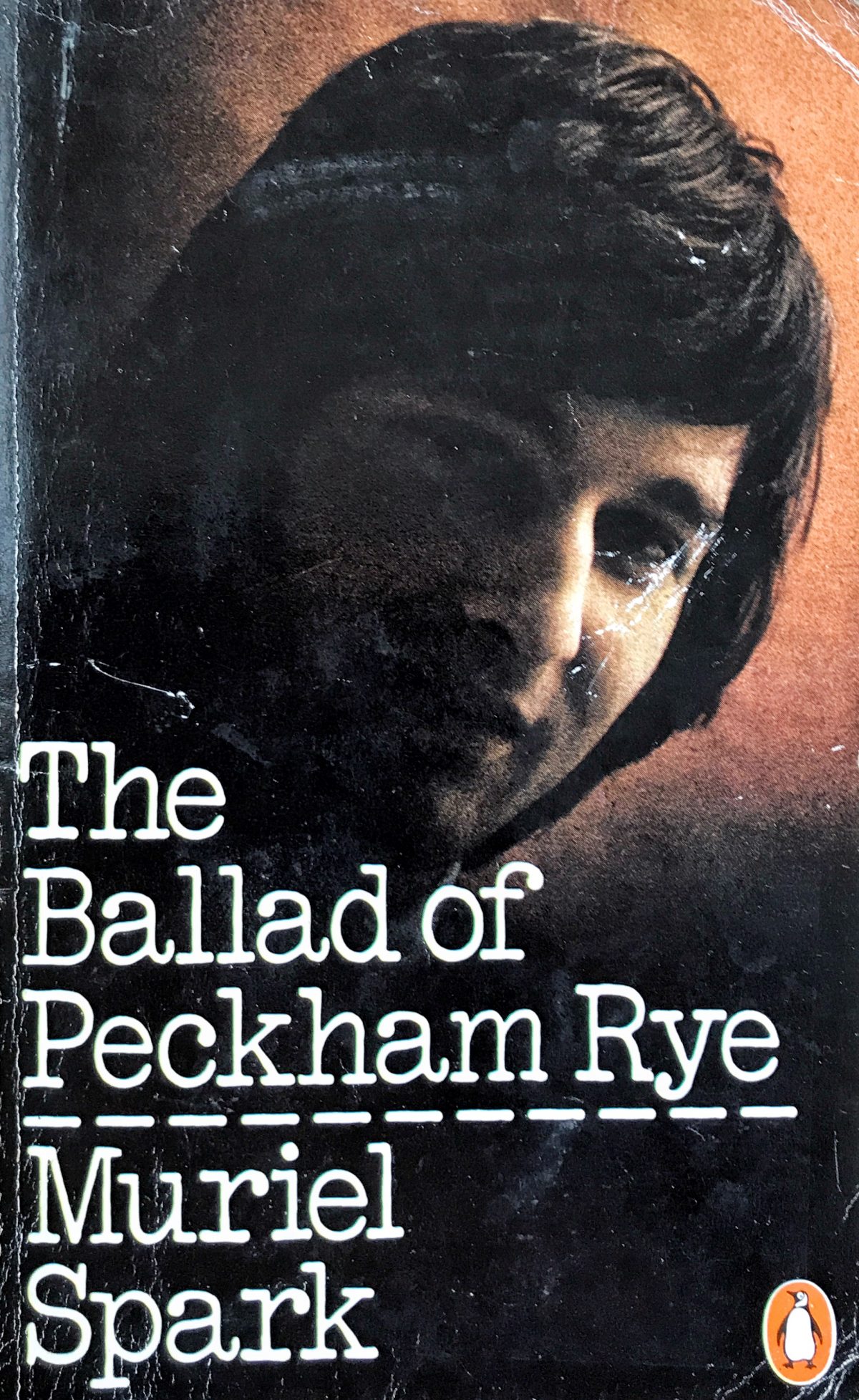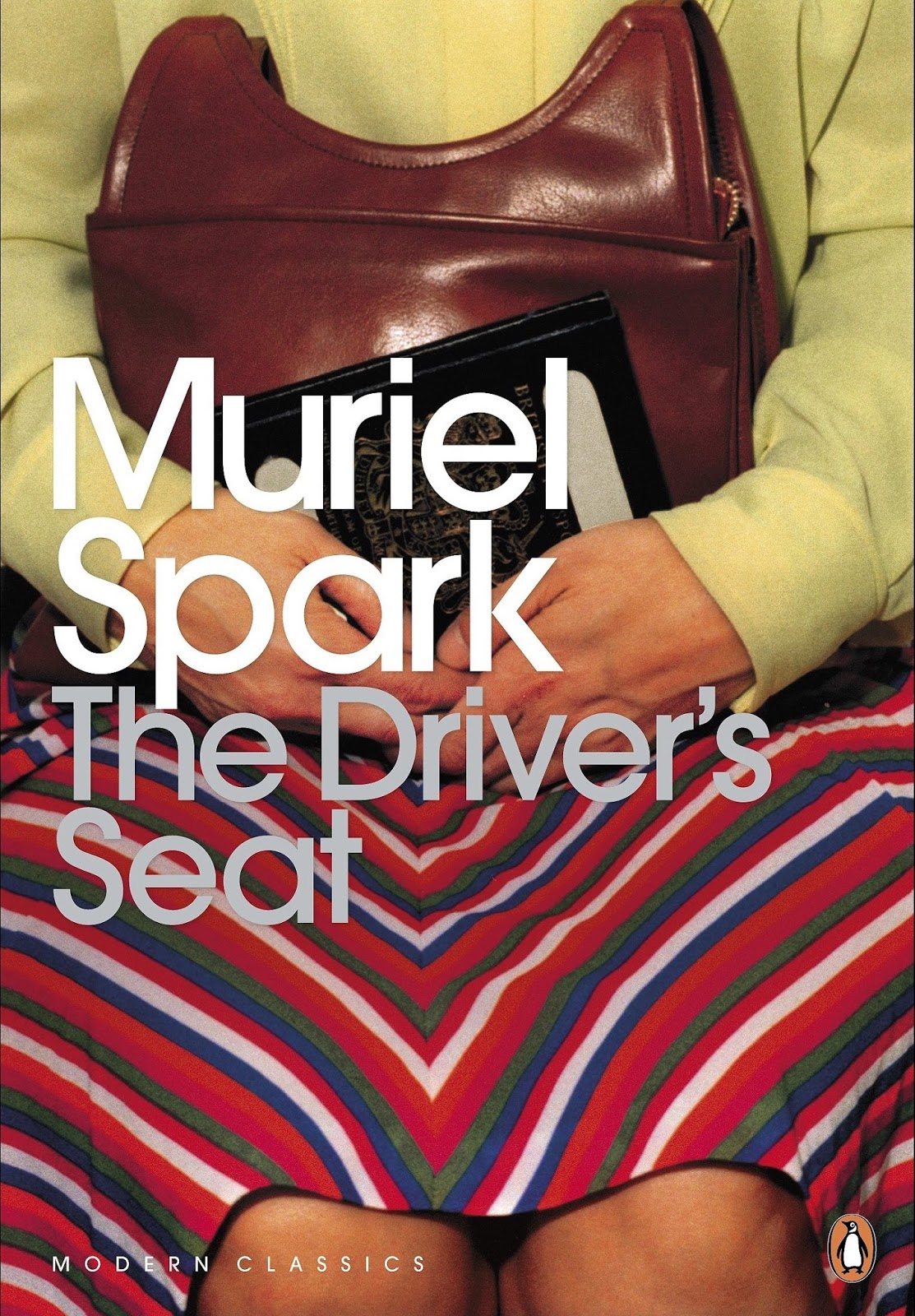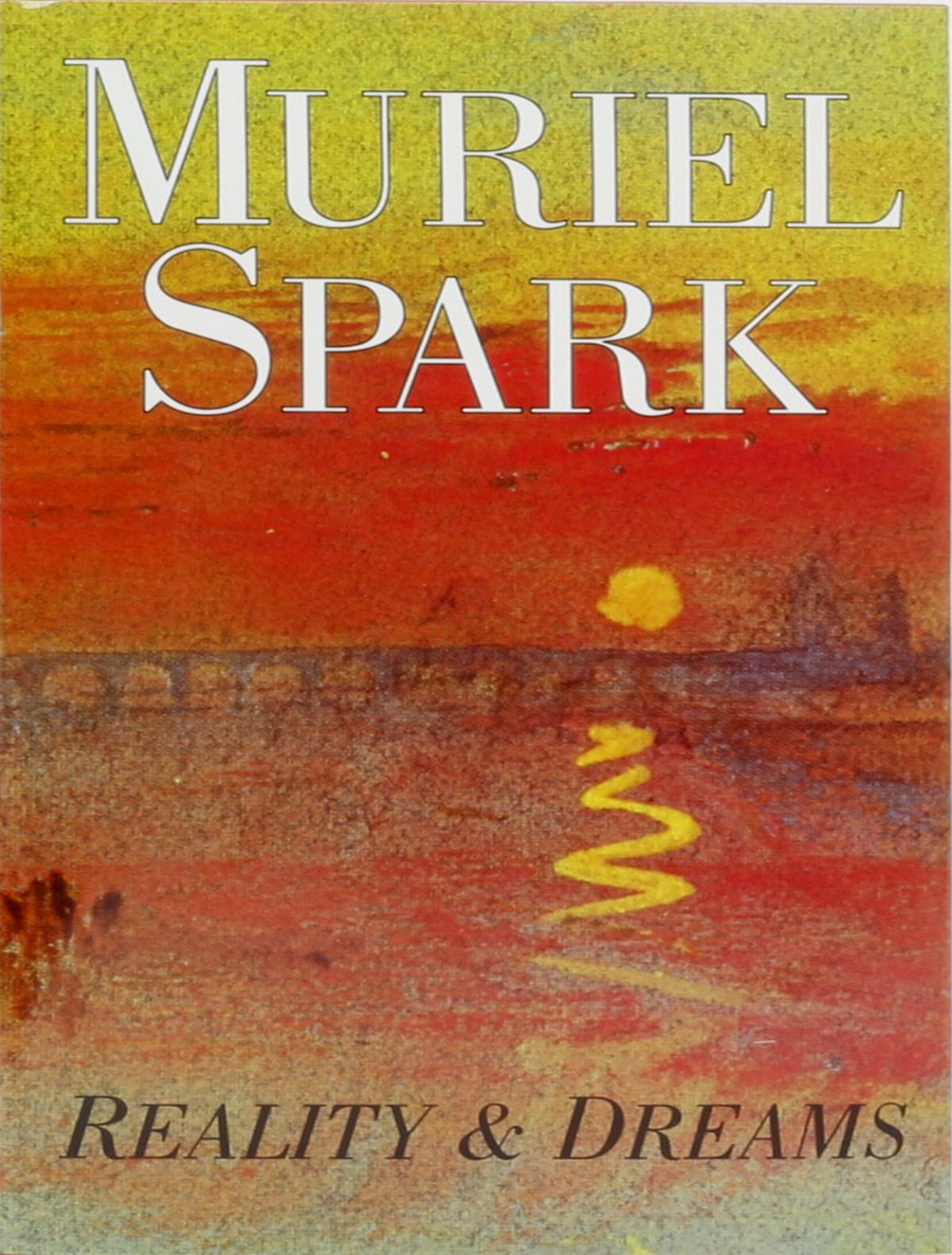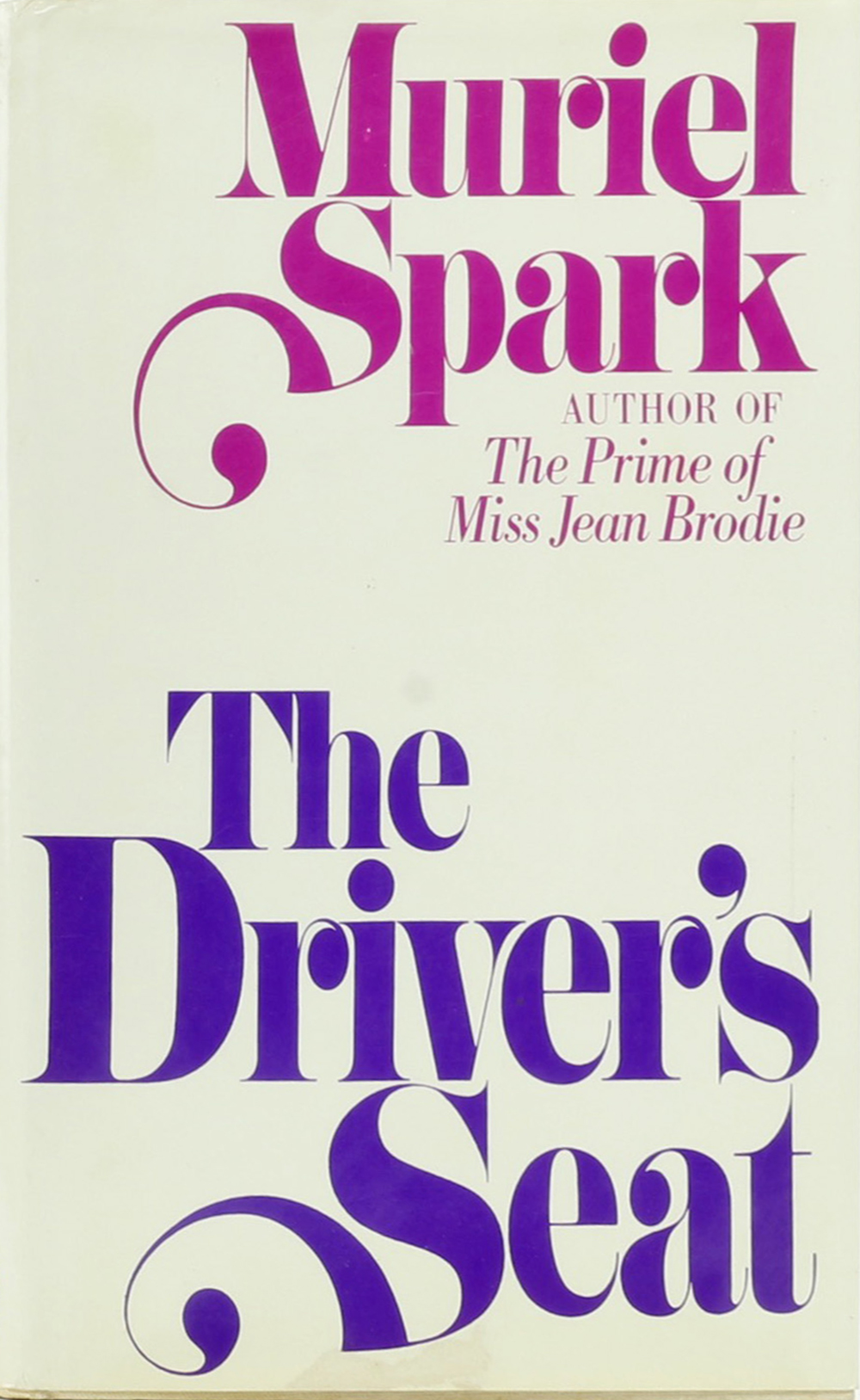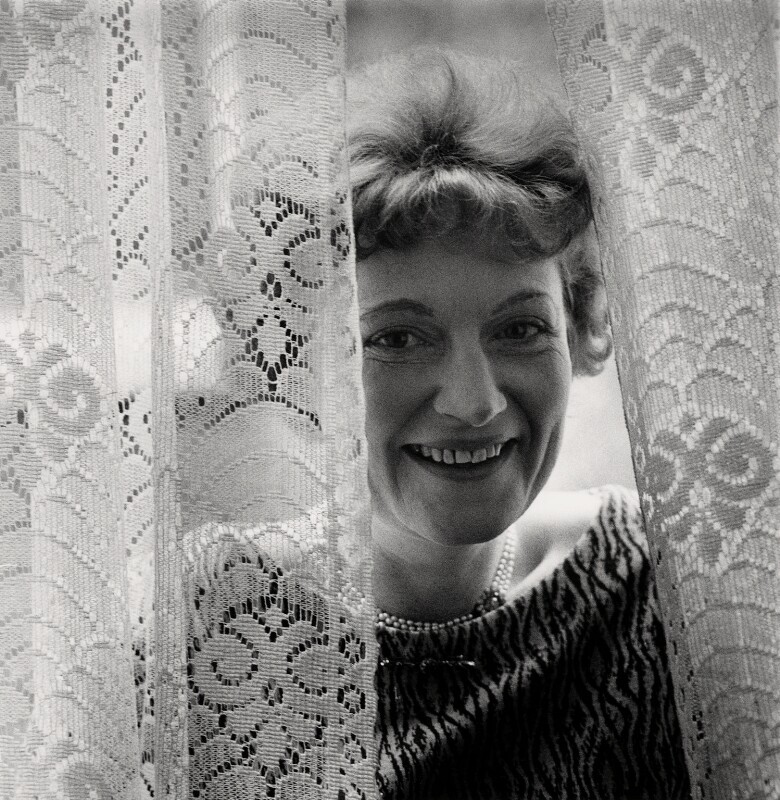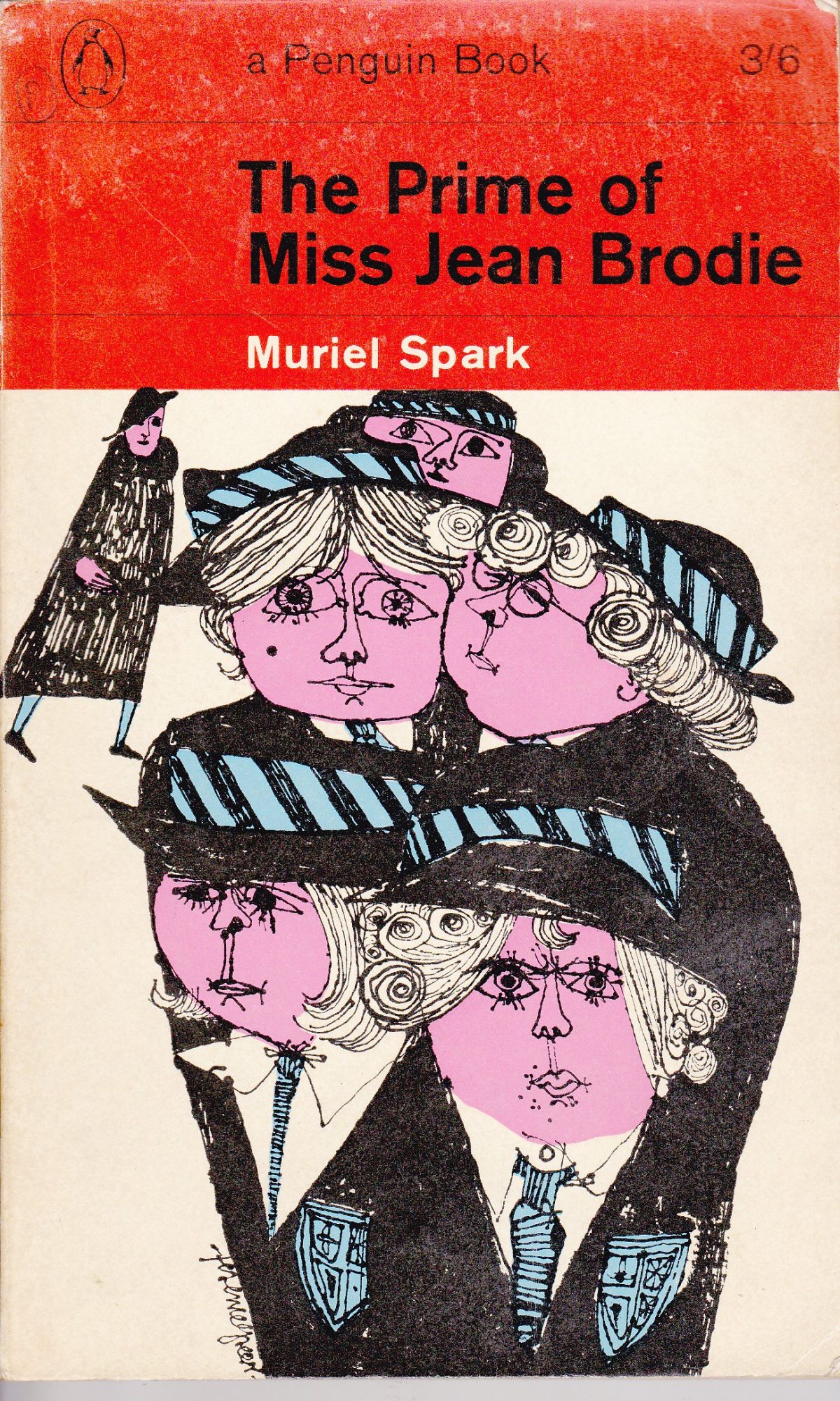
The Prime of Miss Jean Brodie, probably the best known of her works, was first published in The New Yorker magazine and subsequently brought out as a book by Macmillan in 1961. In 2005, the novel was chosen by Time magazine as one of the one hundred best English-language novels from 1923 to present. Published in Penguin in 1967 with a cover designed by Terence Greer.
Muriel Spark was born Muriel Camberg in the genteel suburban Brutsfild area of Edinburgh on 1 February 1918. She was educated at James Gillespie’s School for Girls – later the model of the Marcia Blaine School featured in her most famous novel and subsequent film The Prime of Miss Jean Brodie. Muriel had a precocious interest in literature and at fourteen she won first prize in a poetry competition commemorating Walter Scott’s centenary in 1832.
At the age of 19 Muriel married Sidney Oswald Spark (known as “SOS”) and soon followed him to what was then called Southern Rhodesia (now Zimbabwe). Their son Samuel Robin was born in July 1938. Soon after she found out that her husband was a manic depressive, dangerously unstable and often violent. In 1940 Muriel left Sidney and Robin and returned to the UK and in early 1944 started to live at the Helena Club in London. Years later the club would be an inspiration for the fictional May of Teck Club in The Girls of Slender Means.
It wasn’t until after the war that Muriel started writing seriously beginning with poetry and literary criticism. She wrote under her married name (“Camberg was a good name, but comparatively flat. Spark seemed to have some ingredient of life and fun.”). In 1947 she became editor of the Poetry Review. For ten years between 1955 and 1965 she lived in a bedsit at 13 Baldwin Crescent, Camberwell, south-east London and where she wrote her first novel, The Comforters, published in 1957. The Prime of Miss Jean Brodie published four years later in 1961 was far more successful and until the middle of the 1970s, Spark wrote almost a novel a year, plus many short stories, plays and essays. She eventually moved to New York when she felt to well-known for her former friends but then went on to fall out with everyone there too (“she went through people like pieces of Kleenex”, said the blind writer Ved Mehta)
After New York she moved to Rome, where she met artist and sculptor Penelope Jardine in 1968. In the early 1970s they settled in Tuscany, in the village of Oliveto. She was the subject of frequent rumours of lesbian relationships from her time in New York onwards, although Spark and her friends denied any truth in this. When Spark died in 2006 she left her entire estate to Jardine, while taking measures to ensure that her son received nothing. She is buried in the cemetery of Sant’Andrea Apostolo in Oliveto.
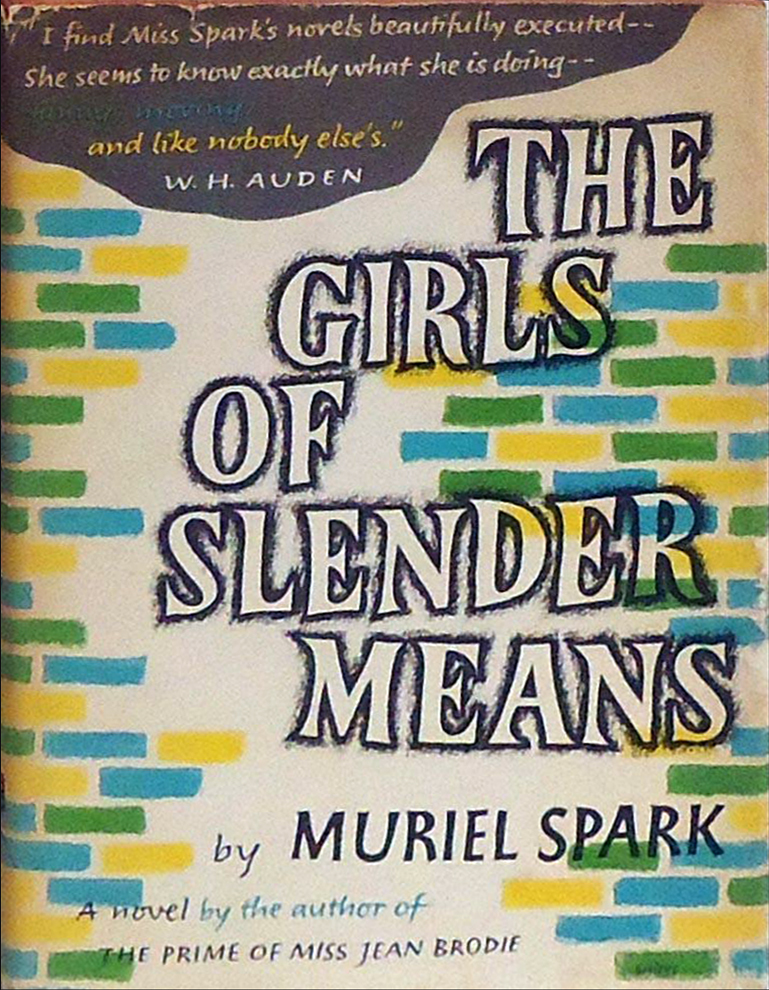
First US edition cover (precedes UK[1]), with quotes from John Updike, W. H. Auden and Evelyn Waugh the cover was designed by George Salter
To reread The Girls of Slender Means is to appreciate the economy and brilliance of Spark’s style. This was an innovative book in 1963 – not that I knew that then – and it still, today, flashes its own disguising Schiaparelli dress, with the beauty of youth pressed close against youth’s bewilderment. Innocence is abruptly overturned in these pages, but Spark has structured her novel so that we realise we are about to be blown into tragedy.
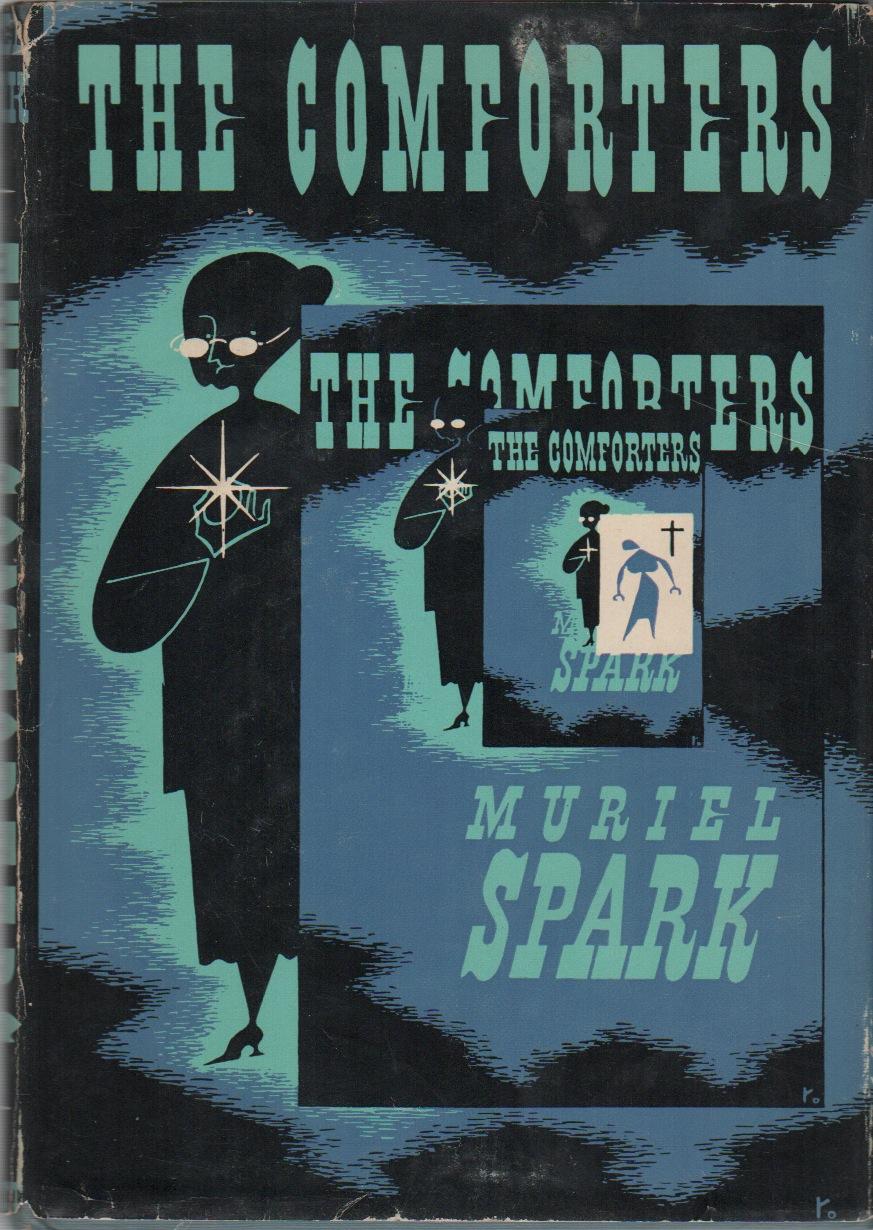
The Comforters is the first novel by Scottish author Muriel Spark. She drew on experiences as a recent convert to Catholicism and having suffered hallucinations due to using Dexedrine, an amphetamine then available over the counter for dieting. Written in 1955 it was published by Macmillan in 1957.
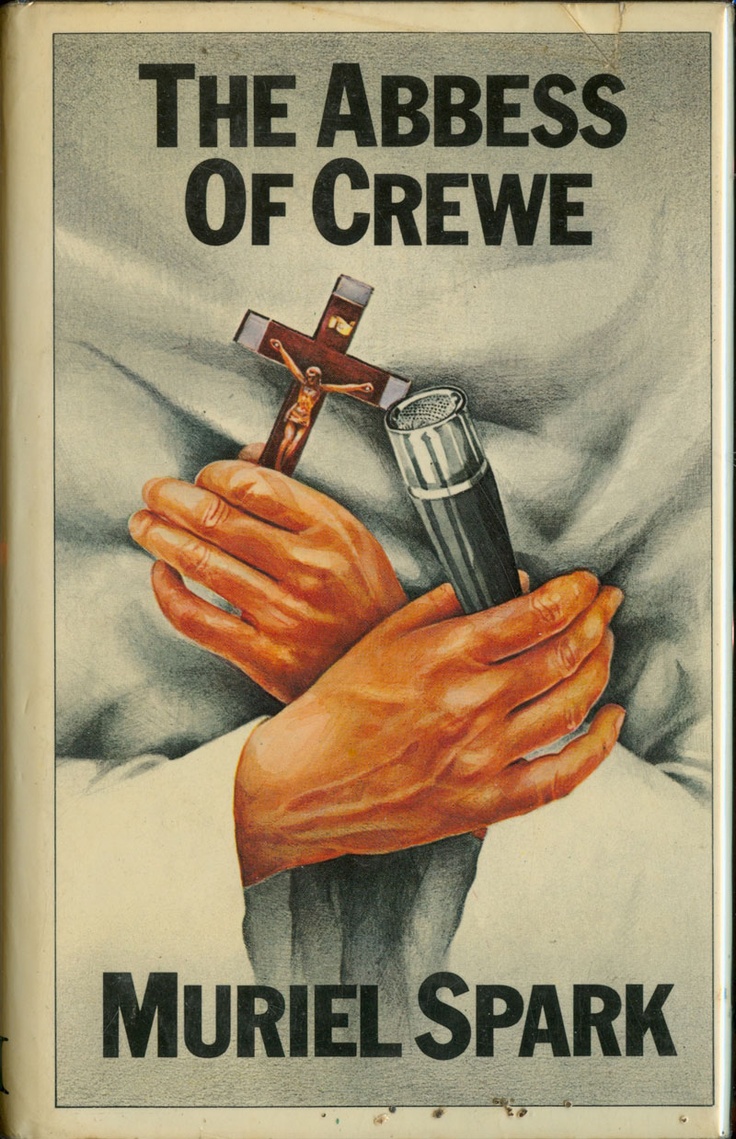
The Abbess of Crewe, considered by many to be an allegory of the Watergate affair, was published in 1974. Michael Lindsay-Hogg adapted the novel into his film Nasty Habits, released in 1977.
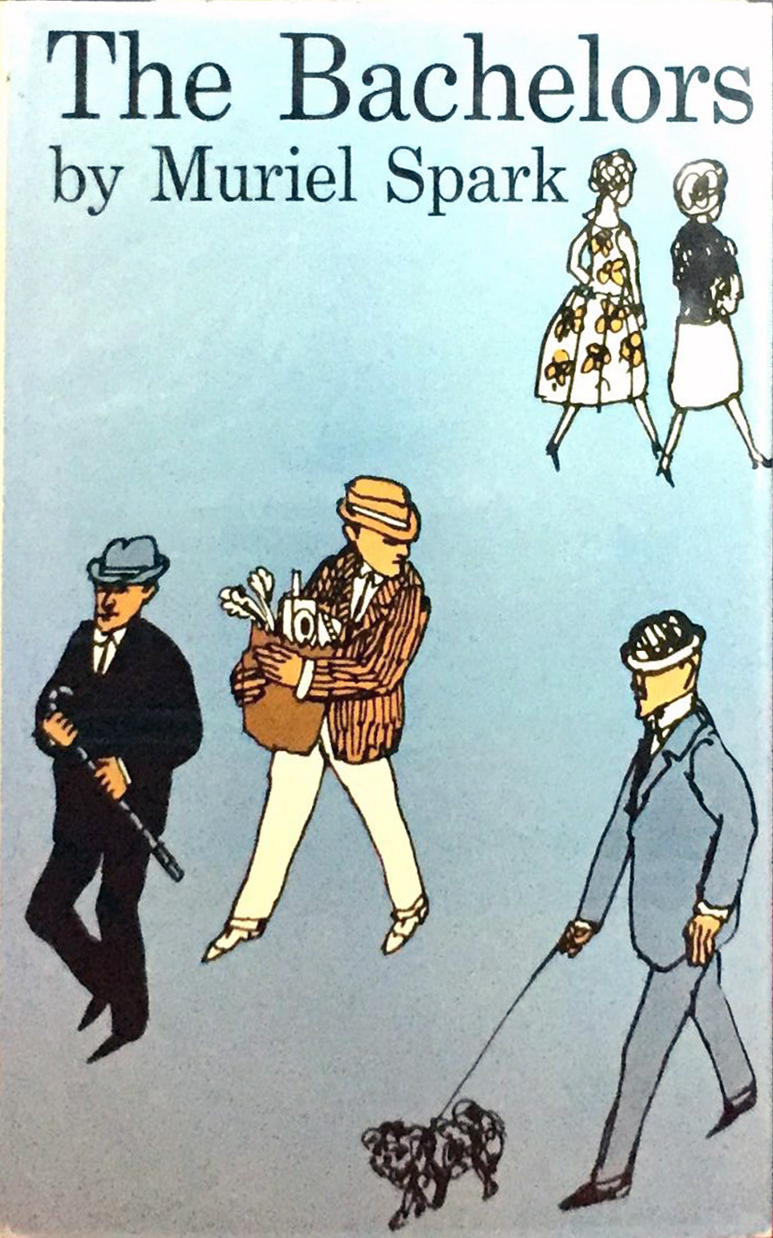
The Bachelors written in 1960 follows a group of British bachelors whose misogynistic world is shattered when they suddenly find themselves the target of blackmail and fraud.
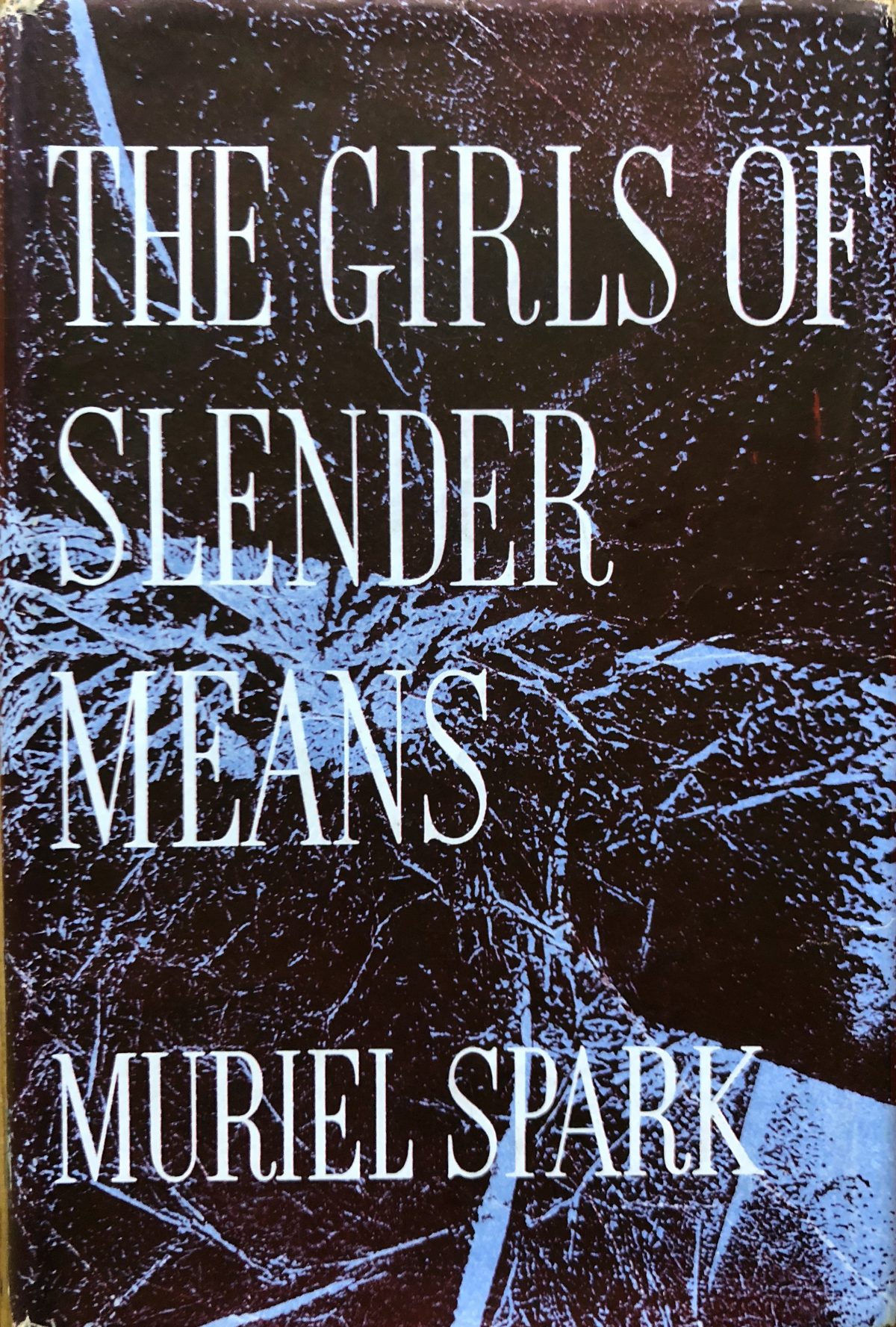
The Girls of Slender Means is a novella published in 1963 It was included in Anthony Burgess’s 1984 book Ninety-Nine Novels: The Best in English since 1939 — A Personal Choice.
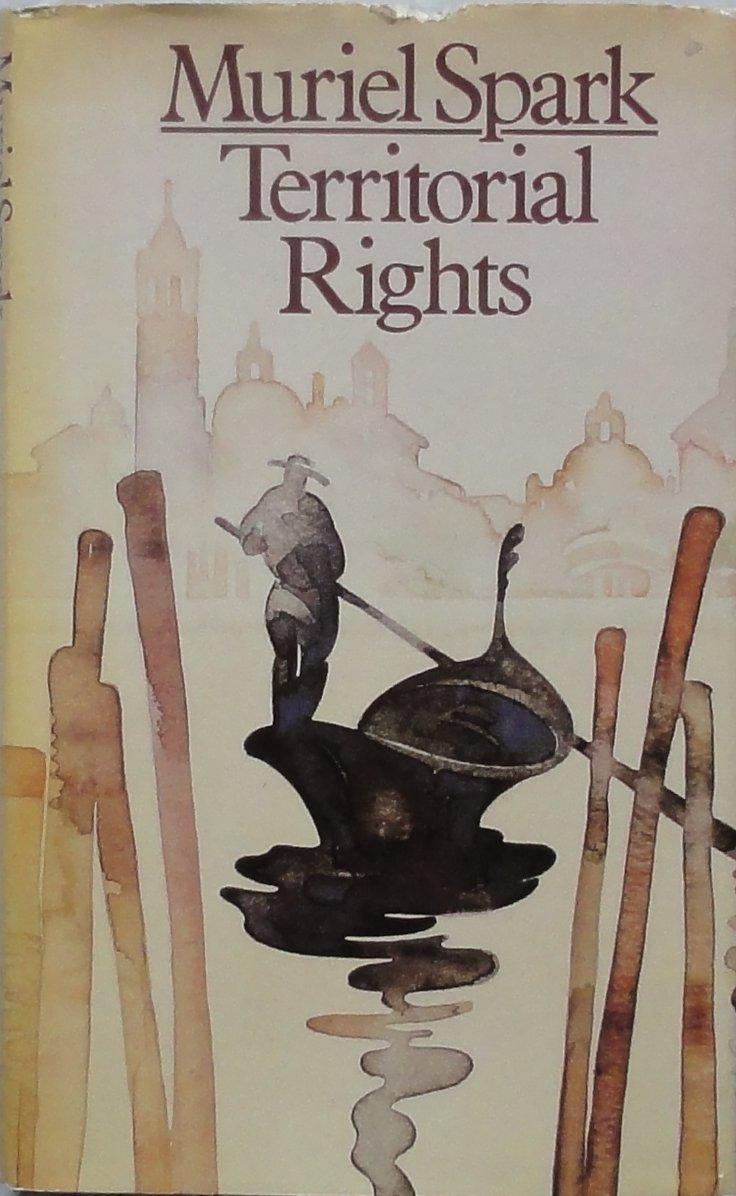
Territorial Rights published in 1979. Edmund White wrote in The New York Times, “Once in a while a book comes along that is beautifully put together and effortlessly entertaining; Muriel Spark’s Territorial Rights is such a novel.
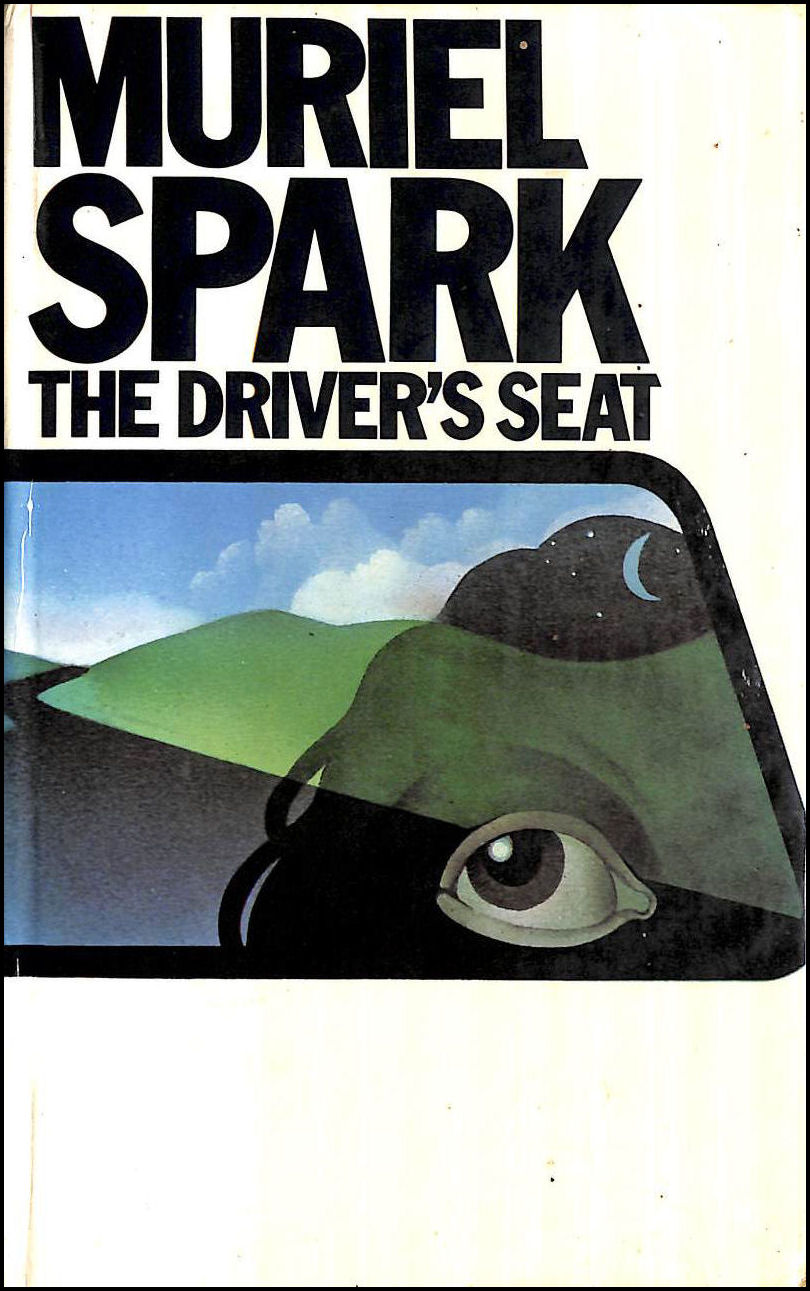
The Driver’s Seat is a novella first published in 1970, it was advertised as “a metaphysical shocker”. It is indeed in the psychological thriller genre, dealing with themes of alienation, isolation and loss of spiritual values.
Would you like to support Flashbak?
Please consider making a donation to our site. We don't want to rely on ads to bring you the best of visual culture. You can also support us by signing up to our Mailing List. And you can also follow us on Facebook, Instagram and Twitter. For great art and culture delivered to your door, visit our shop.

